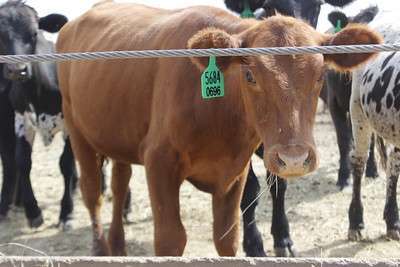K-State beef cattle experts say post weaning sale weight isn’t the only factor in the equation
MANHATTAN, Kan. — Experts at the Beef Cattle Institute say an animal’s performance at sale time is often considered the test for the outcome of breeding decisions, but it is only a small consideration in measuring genetic success.
Brad White, veterinarian and BCI director, laid out the following scenario to kick off a recent Cattle Chat podcast about evaluating the success of the breeding program.
“This is like finals week for the cow-calf operation: the calves were weaned 45 days ago and its sale time. The question is how producers grade their genetics decisions,” White said.
Often, producers define success by selling heavy weight calves, said Bob Weaber, beef cattle specialist and podcast contributor. But, he said success is really so much more than that one factor.
“The pounds of calves sold at sale time is only one determinant of farm level profitability,” Weaber said. “A better measurement of genetic success is the weaning weight per cow exposed. That metric demonstrates how the selection decisions performed related to the growth of the calves and maternal performance of replacement heifers. It also captures the influence of heterosis in crossbreeding systems to ensure the fertility of the cows resulting in the number of calves we take to market and how much they weigh.”
As a follow up, veterinarian Bob Larson added: “Reproductive efficiency of the herd is more important than the growth efficiency of those calves. Producers need to ask themselves what it cost to get that level of efficiency and that is part of the answer to the final exam.”
Larson said a producer will know if they passed reproductive efficiency part of the test if they weaned a high number of calves per cow exposed.
“Look at all the economics,” White said. “It isn’t just the gross return, but rather how that return compares to my cost structure so that I am evaluating a net value.”
To apply those calculations to the whole herd, Weaber said: “If you don’t have a scale to weight all you’re calves you can calculate an estimate of weaning weight per cow exposed by using the average sale weight of the calves sold as a proxy for the overall average multiplied by the number of calves weaned and divided by the number of cows and heifers exposed to bulls in the previous breeding season.”
Weaber advised producers to invest in a farm accounting system to help show their numbers as well as to assign values for purchased feed and hay fed to the herd.
To hear the full discussion on evaluating genetic success, listen to the BCI Cattle Chat podcast.
FOR PRINT PUBLICATIONS: Links used in this story
Beef Cattle Institute podcast, https://ksubci.org/media/podcast-2
K State Research and Extension is a short name for the Kansas State University Agricultural Experiment Station and Cooperative Extension Service, a program designed to generate and distribute useful knowledge for the well being of Kansans. Supported by county, state, federal and private funds, the program has county extension offices, experiment fields, area extension offices and regional research centers statewide. Its headquarters is on the K State campus in Manhattan. For more information, visit www.ksre.ksu.edu. K-State Research and Extension is an equal opportunity provider and employer.
Story by:
Lisa Moser
785-532-2010
lmoser@ksu.edu
More information:
Bob Larson
785-532-4257
rlarson@vet.ksu.edu
Bob Weaber
785-532-2281
bweaber@ksu.edu
Brad White
785-532-4243
bwhite@vet.ksu.edu




